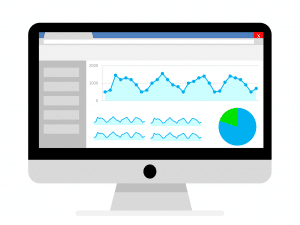If you stop and think about it, we all make dozens – maybe hundreds – of decisions each day, right? Little things like what TV show to watch in the evening or which cereal to eat in the morning, big ones like whether we should refinance our mortgage or buy a new car. Whatever they are, they’re constantly playing on our minds and, while some decisions we make might seem random, our choices don’t ultimately come out of nowhere. When it comes to making a decision to buy a certain product, or use a certain business’ services, we are all influenced by multiple factors; having a basic knowledge of these factors, as well as an idea of how marketers decode what’s known as “consumer behavior” can help you better understand why customers will choose you over your competitor – and help you to boost your revenue and grow your business!
What Is Consumer Behavior?

So what do we mean when we talk about “consumer behavior?” Basically, if you’re looking at consumer behavior, you’re studying consumers themselves, and how they choose the products and services that they buy, use, and even get rid of. It’s actually a fairly scientific subject, drawing on psychology, biology, and economics to examine customers’ emotional, mental, and behavioral responses; but don’t worry, you don’t have to have a degree in all of those subjects to get something out of looking at your customers’ motivations! This field of study boils down to things you’ve probably already thought about as a small business owner:
- How consumers think and feel about different choices available to them, like brands, products, services, and retailers
- What processes consumers use to choose between these different alternatives
- The behavior of consumers while they research and shop for products or services
- How consumers’ behavior is influenced by outside forces, like their peers or the media
- How marketing campaigns can be improved to better influence consumers
Looking at all of these things can help you better understand how customers make their choices, where there are gaps in the market (or when something is obsolete), as well as decide how to best present your product or service to potential customers, so they’ll be more likely to choose your business.
What Influences Consumer Behavior?
So let’s take a closer look at what turns a potential customer into a paying customer – or what makes them say “yes” to your product or service over their other alternatives. Experts who study consumer behavior have broken it down into three factors:
- Personal factors – Everyone comes to their decision making with their own very personal set of interests and opinions, which are often influenced by their demographics (age, gender, profession, culture, background, etc).
- Psychological factors – Separate from their interests and opinions, there are psychological factors, or perceptions and attitudes, that will influence a customer’s response to a particular marketing campaign. Their comprehension skills, how they perceive their own needs, and their attitude towards the type of product or service will all play a part here.

- Social factors – Outside forces will also have a big say in how people make choices and respond to marketing campaigns; this can include friends, family, and social media, as well as your potential customers’ income and education level.
The Main Types of Consumer Behavior
Considering the three factors above can help you to really hone in on who your product or service should be marketed towards, and should get you thinking about what they’re looking for personally, psychologically, and socially. You can further break down your customer base – and figure out how to market to them – by checking out what experts say are the four main types of consumer behavior:
- Complex buying behavior – If your business is offering big ticket items that are infrequently purchased or higher-priced, one-off type services, then your customers are engaging in complex buying behavior. This means that they’re going to be really involved in the purchasing process and do a lot of research before they commit, which will influence their beliefs and attitudes about the product or service. You need to be ready with all the necessary, comforting information on your product or service, as well as be able to shape their attitudes and beliefs about it, if you want to beat out your competition.
- Dissonance-reducing buying behavior – In this type of buying behavior, customer involvement is also very high, because, again, they might be looking for something that they don’t often buy; but, in this case, the consumer doesn’t have that many options to choose from, and might have trouble distinguishing between the brands or services on offer. They’ll end up settling on one because of price and/or convenience, but they might have some regrets afterwards because they aren’t convinced they had all the information or that the best option was on the table.
If this is the type of buyer you’re encountering, your best bet is to engage in some after-sales campaigns that will convince your customers to stick with you, and hopefully refer you to their friends.
- Habitual buying behavior – When it comes to this type of buying behavior, most consumers have low involvement in the purchasing process, because they’re buying things they use for their daily routine, and that they don’t put a whole lot of thought into. They’re buying out of habit, and they might reach for a familiar brand, whatever’s available in the store at the time, or the lowest-priced option; there’s no research necessary, and often not a whole lot of brand loyalty involved. A great example of this is grocery store shopping: you might have a particular type of bread you usually buy, but that’s because you’re familiar with it and the price is acceptable to you, not because you’ve done extensive research on it or even thought too much about it at all.
If you’ve got a product or service that your customers buy or use frequently, or out of habit, you should make sure to use a more repetitive style of advertising so you can stick in consumers’ minds, as well as try to attract their attention with lots of visual imagery that they can begin to associate with your brand.
- Variety seeking buying behavior – Doesn’t it seem like every time you go to the drug store, there’s a new scent of body wash or lotion or other new personal product? Well, that’s because products like that – which are low involvement but offer tons of different options – often appeal to those engaging in variety seeking buying behavior. This means that they switch from brand to brand, company to company – not because they’re dissatisfied, but simply out of a desire for something different. So when companies offer lots of options, they are either trying to build brand loyalty by keeping customers from getting bored with their products, or are trying to lure bored customers away from their habitual purchases.
If you’re in a crowded marketplace, you might want to appeal to customers who want to try something new: offer discounts, coupons, lower prices, free samples – anything that will get you noticed and get people to try you out!
Collecting Information
So now that you’ve got some insight into the field of consumer behavior, you might be wondering how you can gather information to get a better idea of your customers’ motivations. Well, there are lots of ways to connect with them! Try:
- Customer reviews – Reading customer reviews is always a great way to gain insight into the common concerns or wishes that your customers have. Don’t forget to check out reviews on your competitors’ sites, as well!
- Q&A sites – These websites can give you a feel for what common problems and interests are trending, as well as what questions a lot of people have about your industry.
- Surveys – There are websites out there that allow you to quickly create your own surveys, so you can directly ask your customers what they need and want.
- Focus groups – You can also ask them the old-fashioned way: in person!
- Keyword research – This is a big part of SEO, and is a great way to find out what customers are interested in, how interested they are, and what language they’re using to talk about products and services.

- Google Analytics – Using this can help you figure out where your traffic is coming from, so you know a little more about the demographics of your potential customers.
- Blog comments – If you’re producing content to get your business noticed, great! Make sure you’re encouraging comments on your blog to help you further determine what questions your base might have.
- Social media – Millions of people are out there on social media, reflecting on their lives and what they want and need, so it’s a goldmine when it comes to collecting consumer insights!
How customers find you and choose your product or service can sometimes feel frustratingly random, but maybe it isn’t as random as it seems. Studying consumer behavior shows us that people buy based on certain variables that might be unique to them in some ways, but are also universal in other ways, so influencing potential customers just requires a little understanding of how they tick. Taking some time to think about why people make the choices they do could end up being the way to get a leg up on your competition, and keep your business growing!